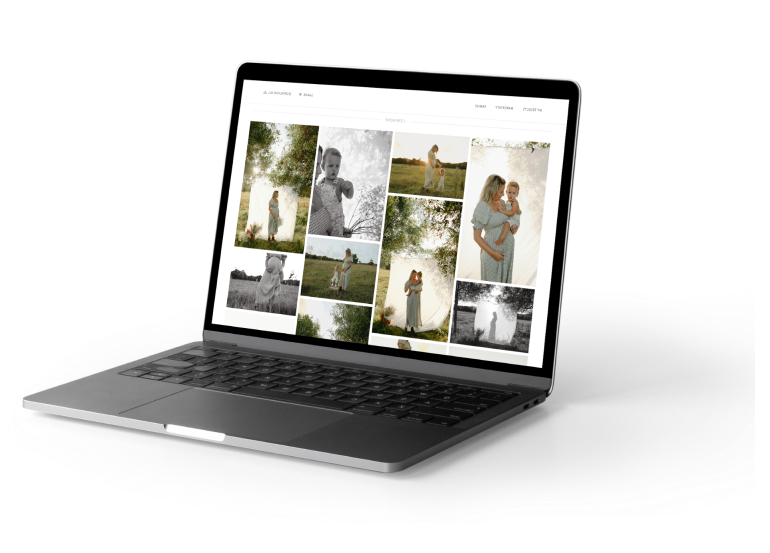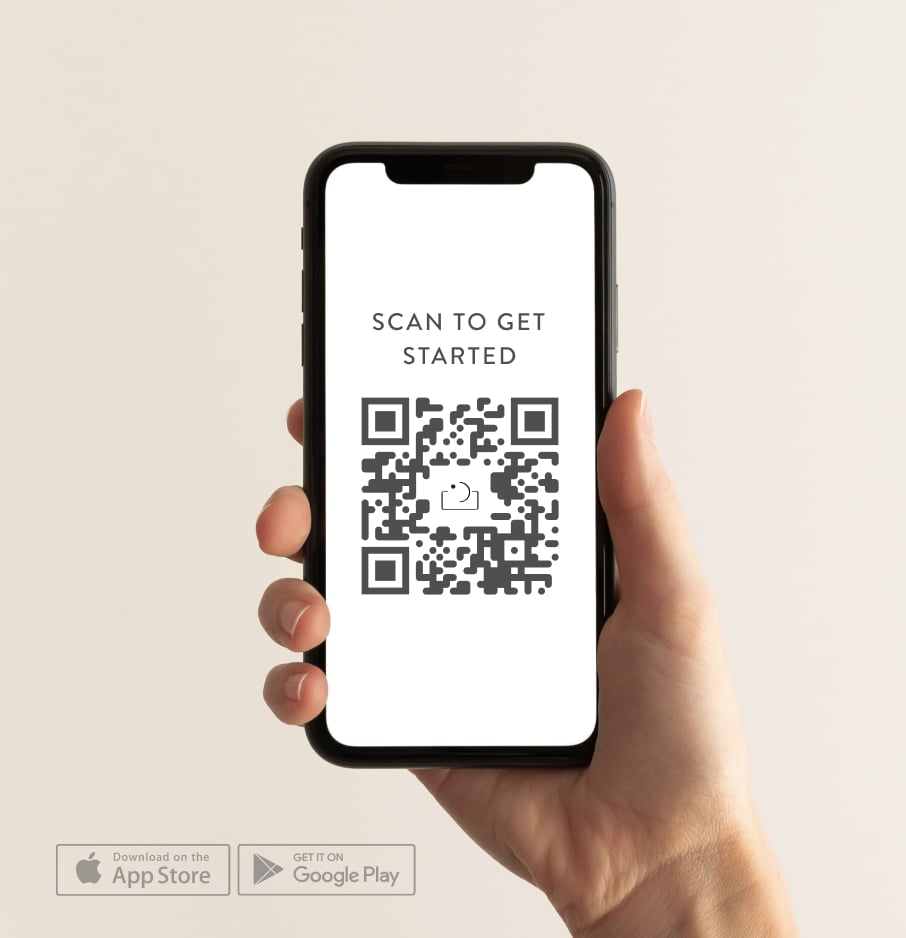You probably already have an Instagram, and you may even have a Facebook Business page, but do you have a portfolio? Not just the one on your Insta feed that features some (undoubtedly beautiful) snippets of your everyday, but an actual Portfolio, a curated selection of the best of the best of your work, an inspirational collection of images you’re really really proud of and a good representation of the direction you’d like to take your business into the future. Portfolios are a key part of getting yourself out there as a photographer. They serve as a visual representation of you and what you’re about, and the good ones even hint at where you want to go. So although we’d never recommend stressing out about making sure everything is absolutely perfect (in making a portfolio or in making anything else in life), it is important to put a little extra effort into this part of your business. Here are some super helpful tips on how to make a stunning photography portfolio that’s irresistible to your dream clients.

1. Dig through the ‘ol hard drives and find your best images.
Make sure the images you choose represent your skill set but are also angled towards the kind of work you hope to secure in the future. If you have a couple of really well-lit portraits from a recent corporate head-shot day but you’re really itching to shoot adventure elopements, consider leaving the corporate portraits out. Envision the kind of shoots you’d like to do on a regular basis and aspire to what actually brings you joy!
2. Fill in the gaps.
On your travels through your hard drives, you’ll probably have found some gaps in your portfolio. Little blank spots that are just asking to be filled with the kind of work that you know you’re meant to be doing. Not sure how to attract your dream client without first booking a few dream clients? We’ve got some pointers for you just below.
3. Do as many creative sessions as possible!
Creative sessions are exactly what they sound like: shoots dedicated to exploring your creativity. It’s best practice to get in the habit of shooting at least one a month, even after you’re making a solid living in the world of full-time photography. Creative sessions allow you to pivot your suite of images towards things you dream of shooting, and flex your photographic muscles without the constraints of client expectations. If you had a look through your portfolio and you don’t have any elopement photographs, just grab a couple of friends and organise a creative session to fill that gap! Easy.
Tips for creative sessions:
- Choose themes and outfits.
- Go into it with a goal, or something you’d like to practice.
- Save new poses on the Unscripted app and practice directing friends in front of your lens.
- Experiment with different locations.
4. Do it on a budget.
Sometimes, as a newbie photographer, it can feel a bit daunting to organise so many moving parts. You may be worried about how expensive the whole production will be, but it’s definitely possible to do creative sessions on a budget! Trust us, all you need to pull off a session like this is a camera, a willing subject, and a bit of time.
Scour your local environment for interesting locations - you’ll find that you don’t need to go far to find interesting elements to incorporate into your photographs. Take yourself on little dates around your city and keep your eyes peeled for interesting places. Walls, bridges, streets, parks, doors, columns, arches, literally anything can be a great photoshoot location with the right eye behind the lens. Live somewhere with crappy weather? Museums, hotels, cafes, and theatres are all great indoor locations to test out on your next creative shoot. Just make sure you get in touch with the place in advance to make sure they’re cool with you shooting there (and if so, what time is best). If you’re shooting at a cafe, offer to share some photos with the owner so they can use it for their socials. Free content for them, free advertising for you! Nobody loses.
5. Get as many people in front of your lens as possible (and do a model call).
Maybe you’re one of the lucky ones out there who has an abundance of enthusiastic and photogenic friends who will happily spend an afternoon in front of your lens. And if so, feel free to skim over the next few sentences. But if you’re beginning to run out of friends to sit for portraits, it might be time to do a model call.
A model call helps you find new subjects to serve as models for your work. Usually, you sweeten the deal for them so they know they’re getting something out of the exchange (free prints, headshots, or some other incentive), and in return you have some fresh faces to work with. Model calls help you demonstrate to your audience that you have the skills to shoot the type of images you want to attract clients for. If you want to start shooting more boudoir but don’t have anything in your portfolio to demonstrate you’ve got the chops, a model call is your anwer. You can run a model call for any kind of session you want to shoot. Family, maternity, boudoir, engagement, 80s glamour shots, you name it.
Model call sessions also help to get new clients through the door. Putting the word out to all your people that you’re doing free creative sessions gives new clients exactly the push they need to work with you. No money spent, no risk taken.
Tips for a successful model call:
- A good model call benefits everyone involved. You’re building out your portfolio, trying something new, and feeding your creativity. Get clear on what you’re offering your participants.
- Set clear and specific expectations. Articulate who you want, what the session is about, and when you want to shoot.
- Identify your goals. Beyond building your portfolio, what sorts of skills do you want to expand on?
- Be firm with your boundaries. Don’t let the participants talk you into doing a photoshoot you won’t want to feature in your portfolio.

6. Treat yourself to a shootout.
Like in the wild wild west, but also not at all like in the wild wild west. A shootout is where models, location scouting, wardrobes, stying, florals, and decor are often taken care of and you have the freedom to expand creatively without the added pressure of paid client expectations. Shootouts are a great opportunity to begin to germinate an understanding of the minutiae of a shoot, what’s involved, and re-ignite inspiration with various approaches as introduced by the hosts of the shootout as well as the other photographer attendees. With everything taken care of, your photos will look super profesh.
7. Learn more!
Skill up further with workshops or approach a photographer you admire and ask them to be your mentor. Butter them up. Tell them why you love their work and ask them if you can sit in on a shoot or lend a helping hand. There’s a wealth of information available on the internet, but workshops are a potent way for you to accelerate your knowledge of your craft in person, whether you’re chasing enlightenment in post-processing, or business, or lighting methods. Use workshops to drive your future photoshoots, and include your new shiny images in your new shiny portfolio.

8. Collaborate with local vendors.
Expand your network to include local florists, venues, celebrants, planners, or stylists. Organising a collaborative shoot with multiple creatives sets everyone up for a win-win scenario. Cross-pollination in marketing means more reach (you tag them, they tag you), everybody enjoys the bonus of new friends in creative places, and the images you put in your portfolio will be boosted by the followings of all the people you collaborate with.
Don’t forget to snap a couple sneaky BTS videos for your IG reels to increase engagement and keep everyone up to date with what you’ve been up to. This is a great place to showcase up-to-date snippets of your life as a photographer as well as mini galleries from your most recent work. It’s the first thing that pops up when people visit your profile, and for potential clients looking to scope your work, often the first place they’ll look. You’ve got one chance at a first impression, and you want people to swipe right on your skills.
As important as all of this is, first and foremost, don’t forget to fill your cup as an artist. In order to avoid burn-out and regret and the not-so-gracious side of yourself, be fierce about protecting the things that bring you joy. Building a portfolio that helps you attract clients (who pay you for shooting the things that bring you joy) is the absolute sweet spot of working as a photographer and your best work will flow out of you if you’re feeling in step with the kind of art you’re creating. All of the tips outlined above are just a starting point for you to create the kind of portfolio that dreams are made of, and it’s really the journey to that finished product that you’ll recall with a smile on your face for years to come.
Got any great model call stories to share or inspiring stories of collaboration? We’d love to hear from you. Hop into our Facebook group and join the thousands of photographers sharing tips and stories with one another.

coffee a week. Use code:
lead your photography
sessions with confidence.


FAQ's
What is the importance of having a strong photography portfolio as a new photographer?
How can I start building my photography portfolio from scratch as a beginner?
What should I include in my photography portfolio, and how do I select the best images to showcase?
How can I create an online portfolio and effectively share it with potential clients or employers?


